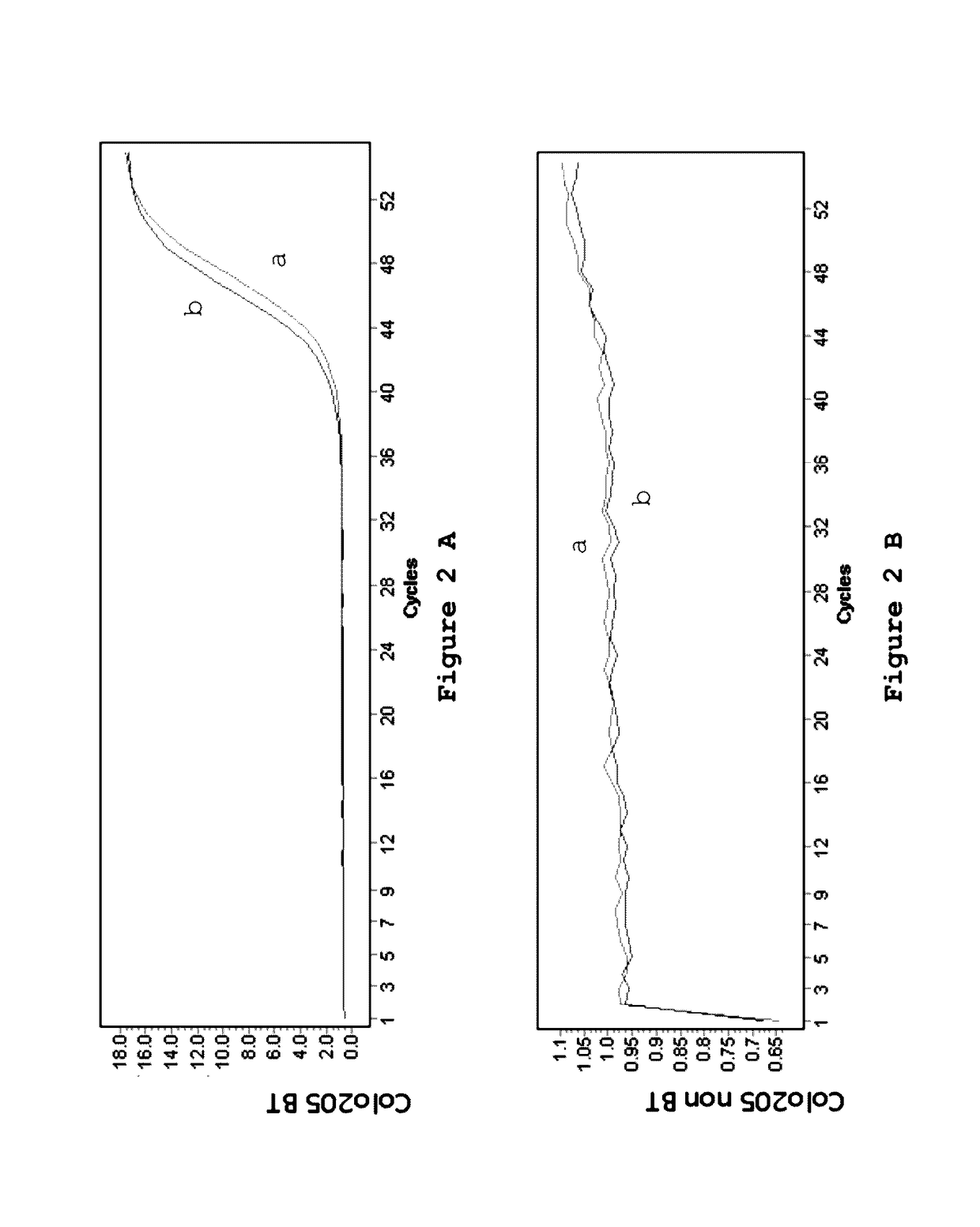Methods of detecting mutations in BRAF and epigenetic changes
a technology of epigenetic changes and mutations, applied in the field of diagnosis and treatment of diseases, can solve problems such as unregulated cell growth, inability to detect mutations in braf, and inability to cause inappropriate gene functions
- Summary
- Abstract
- Description
- Claims
- Application Information
AI Technical Summary
Benefits of technology
Problems solved by technology
Method used
Image
Examples
example 1
Samples
[0132]Four cell lines, SW620, HCT116, HT29 and Colo205 were investigated for the presence of mutations as indicated in table 2.
[0133]
TABLE 2Cell lines used for the detection of mutations.Cell lineGeneMutationSW620KRASG12VHCT116KRASG13DHT29BRAFV600EColo205BRAFV600E
DNA Modification
[0134]The genomic DNA from the cell lines (table 1) was treated using the EZ DNA Methylation Kit from Zymo Research according to the manufacturer's protocol. One ug of genomic DNA for every cell line was converted into BT-DNA in a volume of 50 ul by use of 100 ul of CT Conversion Reagent at 70° C. for 3 hours. Following this incubation, the samples were bound to the supplied columns and 200 ul of desulfonation buffer was added. Desulfonation was carried out at room temperature for 20 minutes. The columns were washed twice and the modified DNA was eluted into 50 ul elution buffer, which results into a final concentration of 20 ng / ul. After the treatment the samples are stored at −80° C. for further ana...
PUM
 Login to View More
Login to View More Abstract
Description
Claims
Application Information
 Login to View More
Login to View More - R&D
- Intellectual Property
- Life Sciences
- Materials
- Tech Scout
- Unparalleled Data Quality
- Higher Quality Content
- 60% Fewer Hallucinations
Browse by: Latest US Patents, China's latest patents, Technical Efficacy Thesaurus, Application Domain, Technology Topic, Popular Technical Reports.
© 2025 PatSnap. All rights reserved.Legal|Privacy policy|Modern Slavery Act Transparency Statement|Sitemap|About US| Contact US: help@patsnap.com



